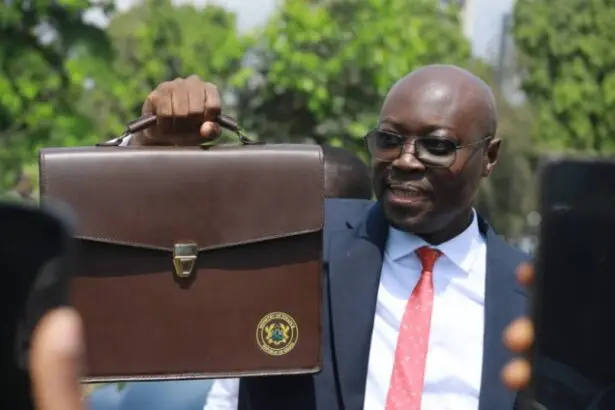Ghana’s economy is in a precarious state, largely due to the mismanagement of financial and economic policies over the past years. As the current president’s tenure comes to an end in December 2024, following the general elections, the incoming government will face a significant challenge: managing the country’s mounting debt burden.
The current debt situation
Ghana’s public debt has escalated dramatically, increasing by GH¢47.4 billion in just the first two months of 2024, bringing the total to GH¢658.6 billion. This staggering amount represents 62.7% of the country’s Gross Domestic Product (GDP) as of February 2024. Specifically, the external debt stands at GH₵380 billion, equivalent to 36.1% of GDP. These figures, reported by the Bank of Ghana in its May 2024 Summary of Economic and Financial Data, underscore the gravity of the fiscal crisis.
Debt restructuring: A step forward or just a deferment?
An agreement in principle (AIP) has been reached to restructure a substantial portion of Ghana’s debt, amounting to $13.1 billion. This milestone has been hailed as a significant step towards economic recovery, with analysts recognizing it as a major achievement given the country’s fiscal constraints. The restructuring process, which began 18 months ago, has been swift by international standards, reflecting the urgency of Ghana’s financial predicament.
However, the AIP raises questions about its long-term sustainability. While it offers immediate debt relief and a foundation for future growth, there are concerns that it may merely defer the problem, postponing the burden to future administrations.
The journey so far
Ghana’s journey to debt restructuring has been fraught with challenges. The country defaulted on its international debt in December 2022, ceasing payments to international creditors due to financial constraints. By March 2023, the government had engaged with international bondholders to negotiate a resolution. This led to an agreement in principle with bilateral creditors in January 2024, followed by formal talks with international bondholders in March 2024.
The domestic debt restructuring, totalling GH¢203 billion, alongside the bilateral debt agreement involving GH¢5.4 billion deferred to 2026, and the commercial debt restructuring of $13.1 billion, underscore the government’s comprehensive approach to addressing the fiscal crisis. However, these measures reflect the immense burden borne by Ghanaians due to the mismanagement of the economy. The people have faced severe economic hardship, with no accountability from those responsible for the mismanagement. Despite the restructuring, which reportedly saved GH¢61 billion from domestic debt exchange, $2 billion from bilateral debt, and $4.7 billion from commercial debt, the cost of these financial maneuvers has been disproportionately shouldered by the citizens, who continue to endure economic instability, uncertainty and cost of living crisis.
Risks and uncertainties ahead
Despite these efforts, significant risks and uncertainties remain, especially given the current government’s track record in financial and economic management. With the upcoming elections, there is a heightened risk of overspending, which could undermine fiscal discipline and stability. The new government will inherit a complex financial landscape, necessitating careful management to avoid further crises.
- Market conditions and volatility: Fluctuating market conditions could impact the success of the debt restructuring. The new government must navigate these uncertainties to ensure economic stability.
- Legal and regulatory challenges: Potential legal disputes and regulatory hurdles could impede the implementation of the debt restructuring agreement, requiring robust legal frameworks and proactive management.
- Stakeholder compliance and cooperation: The cooperation of all stakeholders, including international creditors and domestic entities, is crucial for the successful implementation of the restructuring plan.
- External economic factors: Global economic conditions and commodity prices will significantly influence Ghana’s recovery trajectory. The new government must remain vigilant and adaptive to these external factors.
Financial obligations and future borrowing
The restructured debt obligations that Ghana faces in the coming years are substantial. Initial payments and interest bonds span from 2024 to 2030, with 2024 alone requiring payments amounting to $181 million. While this figure might seem manageable in isolation, the source of these funds remains a critical concern amidst an economy already stretched thin.
Without the recent debt restructuring efforts, Ghana would have faced a staggering half a billion dollars in payments by 2025. This amount would have been an insurmountable challenge for any administration, underscoring the precarious financial situation the country is in.
Despite these restructuring efforts, which were aimed at providing some breathing room, Ghana has continued to incur additional debt—amounting to at least $2.69 billion since 2022. This continued borrowing, while essential for maintaining state functions and public services, further exacerbates the financial burden on the nation. Each new loan adds another layer of complexity to the already daunting task of managing the country’s debt.
For the incoming government, this presents a critical challenge: how to effectively manage both the restructured debt and these new financial obligations without falling back into a cycle of debt crises. It will require a delicate balance of fiscal discipline, innovative financial management, and perhaps most crucially, the rebuilding of trust with international creditors and the Ghanaian public alike.
The government must not only find sustainable ways to meet these financial commitments but also ensure that the economic policies implemented do not further strain the country’s financial stability. This includes identifying new revenue streams, optimizing expenditure, and potentially renegotiating terms where possible to mitigate the risk of another debt restructuring scenario.
Moreover, the broader economic environment must be conducive to growth. This involves not just fiscal and monetary policies but also structural reforms that can enhance productivity and economic resilience. Addressing the underlying causes of the debt crisis—such as economic mismanagement, corruption, and inefficiencies—will be crucial in preventing a recurrence.
Looking forward
As Ghana prepares for a new administration post-2024, the incoming government must adopt robust economic strategies to navigate the debt burden and ensure sustainable growth. This includes leveraging international support, implementing fiscal discipline, and fostering economic resilience to prevent future financial crises.
The road ahead is challenging, but with careful management and strategic planning, Ghana can overcome its current fiscal difficulties and pave the way for a more stable and prosperous future.
















